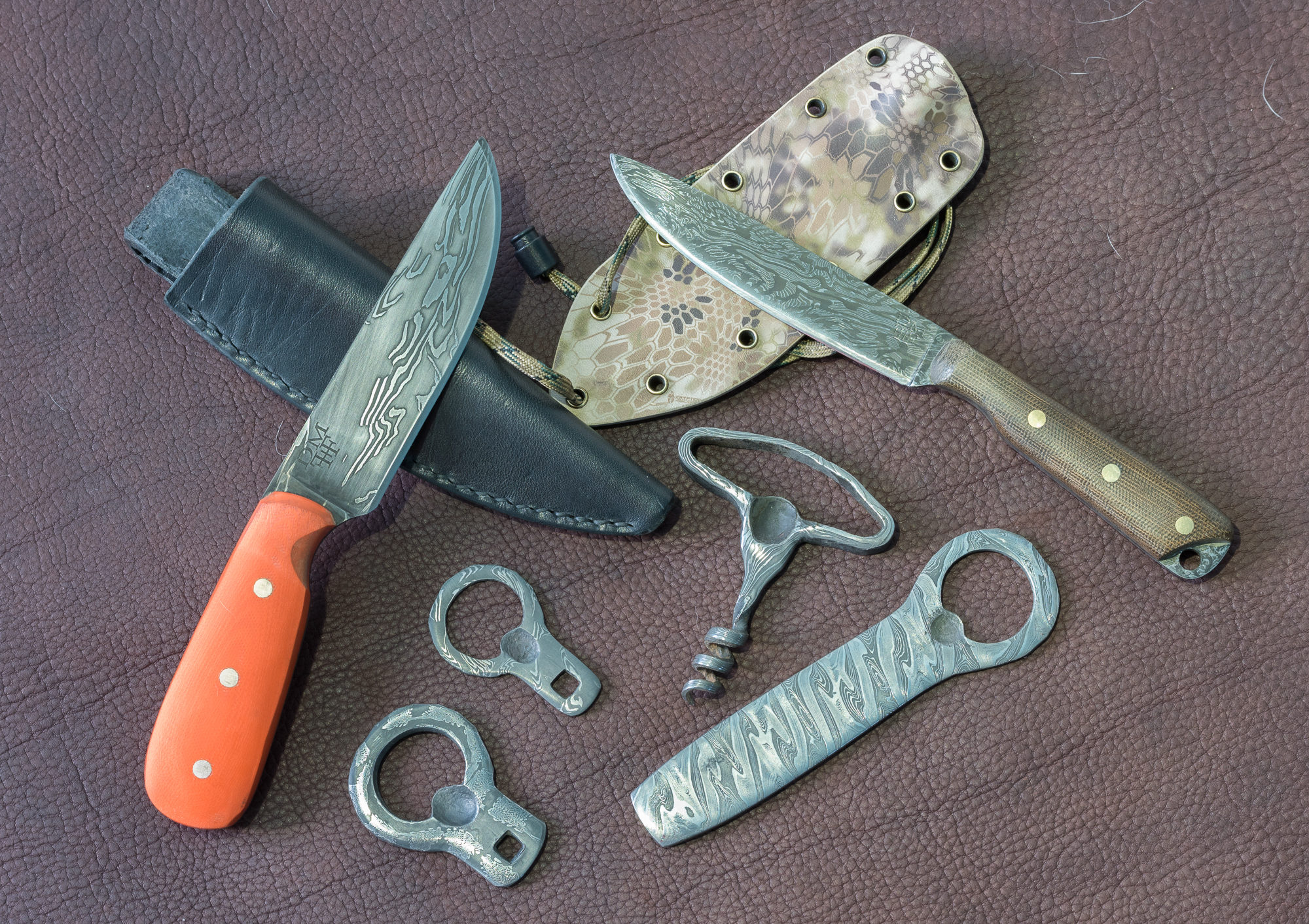
This will be the first of a set of posts on maintaining carbon steel and pattern-welded carbon (Damascus) steel tools. Other posts will include rust/patinas, sharpening, re-etching, leather care and whatever else I think of including over the next few weeks.
Blade Basics
First off, a couple quick knife and carbon steel basics:
– Don’t leave a carbon steel knife wet (or most stainless steels) – wipe them dry when not using them.
– Don’t put a knife through the dishwasher… If you need to clean it, clean it by hand and dry it immediately.
– Don’t cut on surfaces harder than the blade like ceramics or glass as this will very quickly dull an edge.
Otherwise, use a carbon steel or pattern-welded blade like any other knife. I use mine regularly for cutting up cardboard boxes, cutting hay bale strings, for food preparation, as a dinner utensil and for making kindling (we heat our house with a wood stove that I start every morning around 5).
Cleaning
I don’t clean my knives often since there’s no good reason after most cutting tasks, really only after cutting something like raw chicken or if the knife got bloody. Blue Dawn soap is my standard go-to, both for cleaning dirty knives as well as cleaning steel in preparation for etching. Other solvents like acetone, isopropyl alcohol and tert-butyl acetate also work well. Tert-butyl acetate is the best as it won’t leave any residual moisture… but WD-40 after cleaning will also ensure no moisture stays on the surface, as will compressed air.
Protective Coatings
After cleaning, which exposes the surface to the environment, it’s important to apply some sort of protective coating. Even if you haven’t cleaned a knife it doesn’t hurt to apply a protective coating regularly, especially if you live in a humid environment. There are a wide variety of coatings available, both food-grade (food safe) and ones not approved for use with food. The products I use and recommend include oils, waxes and polishes. Follow the manufacturer’s instructions for their application, using clean paper towels, toilet paper and microfiber cloths.
Oils
I believe oils are best for blades primarily used for food preparation, as well as pattern-welded blades where darker etched areas are desired. Mineral oil is the standard and available both in food-grade and non-food-grade (usually for horses, available at farm stores). Mineral oil is the main ingredient in a lot of knife/gun oils out there (e.g. Ballistol, Rem Oil.) Camellia oil is another that I currently use and is common with Japanese carbon steel cutlery. I haven’t switched completely to this from mineral oil, but I’m headed that way. WD-40 works fine as well, but does tend to evaporate relatively quickly compared to the other oils.
Waxes
I like waxes for bushcraft knives as well as long term storage. Renaissance Wax is my go-to for longer term storage, but good carnauba wax works well too. Polishes
For me, polishes usually do a bit of cleaning as well as being a protective coating. Flitz and Simichrome are my favorites. The USDA-approved Flitz seems to be a bit more abrasive than the blue variety of Flitz or Simichrome, and typically it will reduce the contrast slightly on pattern-welded steel as the darker areas will lighten up a bit (although the bright layers shine up a bit, so it’s a trade-off). I find polishes best for brighter blades like mirror polish or pattern-welded blades where there are more bright layers than dark, typically in higher layer count patterns). Polishes may also remove a bit of patina, but are a great first step if a blade starts to discolor or rust.
Next week – rust and patinas.
